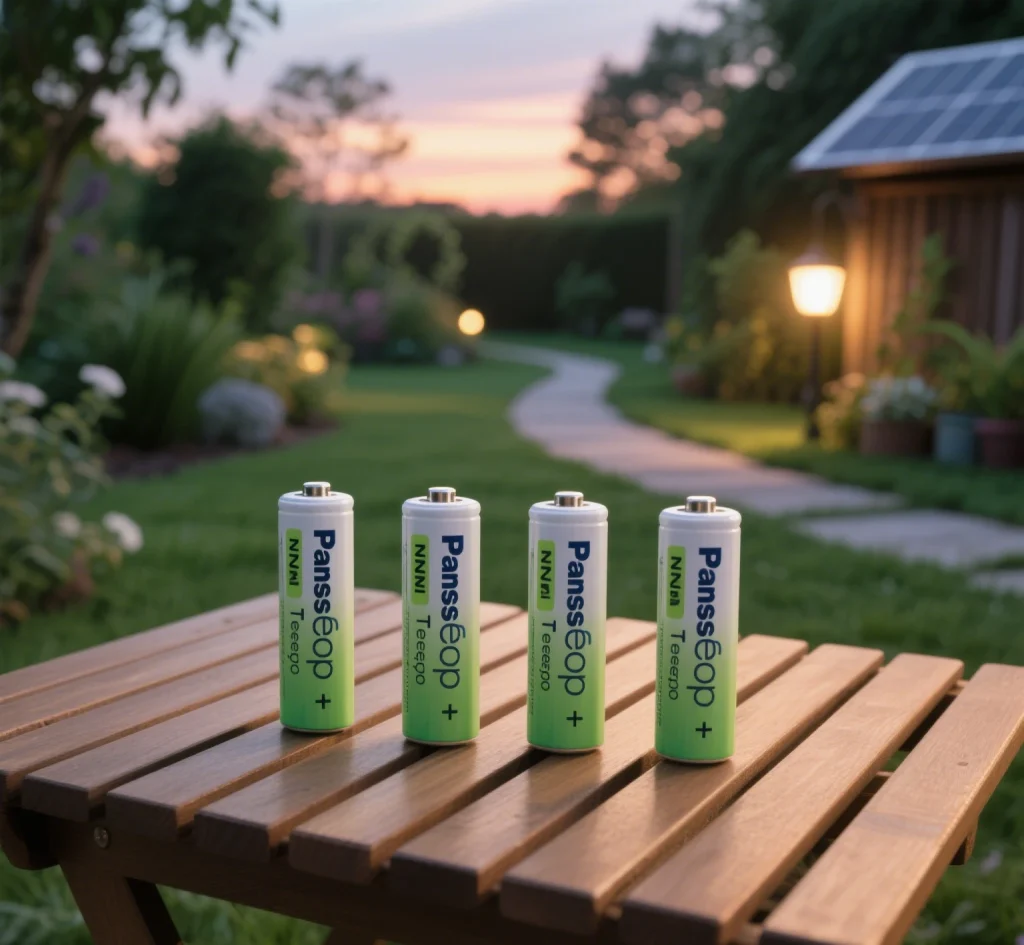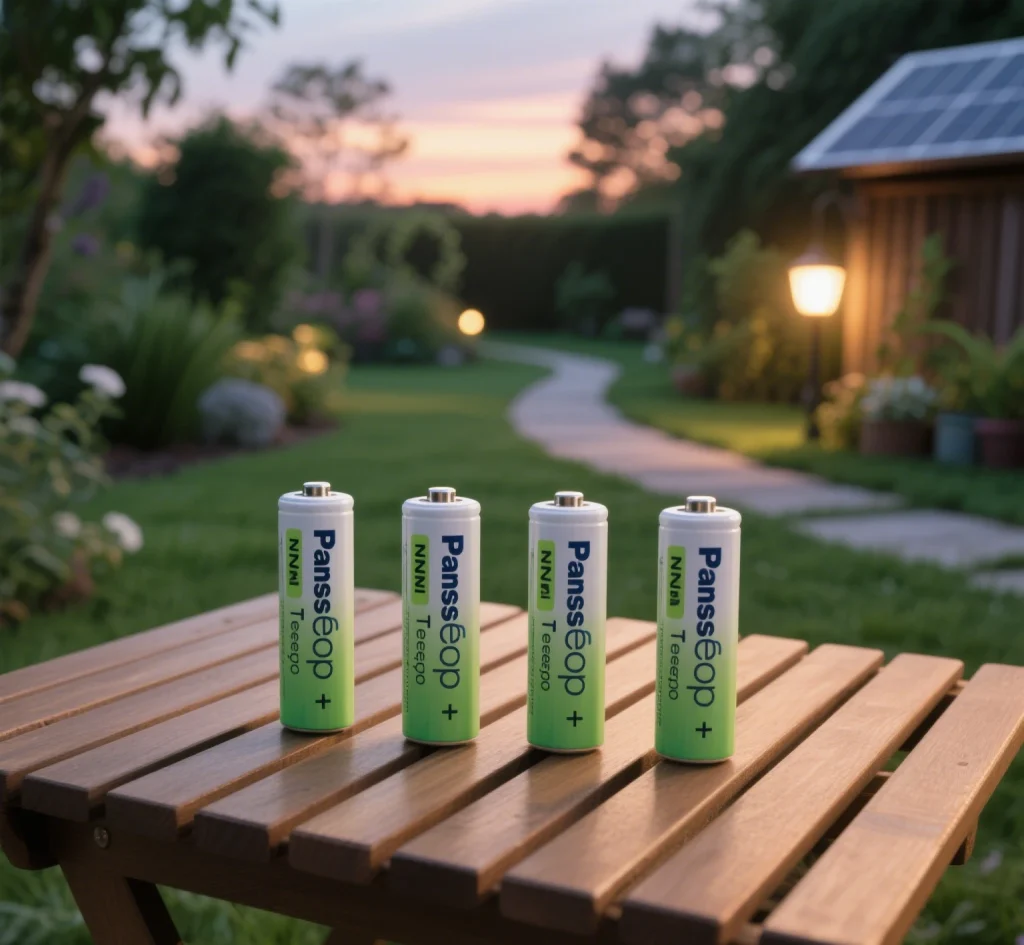Lithium batteries are a cornerstone of solar lighting systems, particularly in the rapidly growing U.S. market for solar landscape and street lighting. As the demand for sustainable, energy-efficient outdoor illumination surges—projected to reach USD 5.6 billion by 2032—lithium batteries play a pivotal role in ensuring reliability, efficiency, and environmental benefits. This article explores the essential functions of lithium batteries in solar lighting, their advantages over traditional alternatives, and their impact on the U.S. market, with a focus on addressing challenges like 2025 tariffs and cloudy-day performance.

The Importance of Lithium Batteries in Solar Lighting
Solar lighting systems, such as solar lawn lights, path lights, and streetlights, operate as independent units that rely on solar panels to convert sunlight into electricity. This energy is stored in batteries for use during nighttime or cloudy conditions. Lithium batteries, particularly lithium iron phosphate (LiFePO4), have emerged as the preferred storage solution due to their superior performance characteristics. In the U.S., where solar lighting is increasingly adopted in residential gardens, commercial properties, and municipal spaces, lithium batteries ensure consistent illumination while aligning with sustainability goals.
Key Functions and Features of Lithium Batteries
- Efficient Energy Storage
Lithium batteries excel at storing energy generated by solar panels. Their high energy density—typically 150–200 Wh/kg compared to 30–50 Wh/kg for lead-acid batteries—allows them to store more energy in a compact form. This is critical for solar lights, where space constraints demand efficient storage. For example, a 10W solar lawn light with a 3.2V LiFePO4 battery can store enough energy to provide 8–12 hours of illumination, even in low-sunlight regions like the Pacific Northwest. - Extended Lifespan
Lithium batteries offer a cycle life of 2,000–5,000 cycles, far surpassing lead-acid batteries (300–500 cycles). A 2023 study in Journal of Energy Storage highlights that LiFePO4 batteries retain 90% capacity after 2,000 cycles, reducing replacement frequency and maintenance costs (Chen et al., 2023). In the U.S., where solar lights are used in diverse climates, this longevity translates to 5–10 years of reliable performance, making them cost-effective for homeowners and municipalities. - Environmental Benefits
Unlike lead-acid batteries, which contain toxic heavy metals like lead and cadmium, lithium batteries are more environmentally friendly. Their integration into solar lighting systems, powered by renewable energy, significantly reduces carbon emissions compared to grid-powered lighting. In the U.S., where energy-intensive outdoor lighting consumes ~5 kWh/month per fixture, solar lights with lithium batteries can save 80–90% of electricity costs, aligning with federal sustainability initiatives like the Energy Star program. - Rapid Charging Capabilities
Lithium batteries support fast-charging technology, enabling efficient energy capture even on cloudy days or in regions with limited sunlight. A 2024 Solar Energy study notes that LiFePO4 batteries can achieve 80% charge in 2–3 hours under diffused light, compared to 5–6 hours for lead-acid batteries (Mayer et al., 2024). This is particularly valuable in states like Washington or Oregon, where cloud cover is frequent, ensuring solar lights remain operational. - Temperature Resilience
While extreme temperatures can affect lithium battery performance, LiFePO4 batteries are more stable than alternatives, operating effectively between -20°C and 60°C. Advanced battery management systems (BMS) further enhance resilience by regulating temperature and preventing thermal runaway. In the U.S., where climates range from Arizona’s heat to Minnesota’s cold, this adaptability ensures consistent performance. - Intelligent Battery Management
Modern lithium batteries incorporate BMS to monitor voltage, current, and temperature, preventing overcharging, over-discharging, and overheating. This extends battery life and enhances safety, critical for outdoor applications exposed to weather extremes. Brands like Solareye integrate BMS into their solar lights, ensuring reliability in municipal projects across California and Texas. - Lightweight and Easy Installation
Lithium batteries are significantly lighter than lead-acid counterparts, with LiFePO4 batteries weighing 50–70% less. This simplifies installation and maintenance, reducing labor costs for U.S. installers. For example, a 20W solar streetlight with a lithium battery can be installed by a single technician, compared to heavier lead-acid systems requiring additional support.

Impact of Lithium Batteries on the U.S. Solar Lighting Market
The adoption of lithium batteries has accelerated the growth of the U.S. solar lighting market, projected to grow at a CAGR of 7.8% from 2025 to 2030. Their high efficiency and reliability address key consumer concerns, such as performance in low-light conditions and long-term cost savings, while supporting market trends like smart lighting and all-in-one designs.
Market Trends and Opportunities
- Residential and Commercial Adoption: Lithium-powered solar lawn lights dominate the residential segment, with a 10.1% CAGR, driven by demand for aesthetic and secure outdoor spaces. Commercial applications, such as retail and hospitality, leverage lithium batteries for their durability and smart features, achieving a 9.4% CAGR.
- Smart City Integration: U.S. smart city initiatives, particularly in California and Texas, incorporate lithium-based solar streetlights with IoT connectivity, enhancing energy efficiency and remote monitoring.
- Seasonal Demand: Similar to China’s fast-moving consumer goods (FMCG) trends, U.S. consumers purchase lithium-powered solar lights for holidays like Christmas, favoring customizable designs enabled by compact, efficient batteries.
Tariff Challenges and Mitigation
The 2025 U.S. tariffs, including 50–145% duties on Chinese solar components and 32–48% on Southeast Asian imports, pose challenges for lithium battery supply chains, as China produces ~80% of global lithium-ion batteries. These tariffs could increase solar light prices by 10–20%, extending payback periods by 6–12 months. However, mitigation strategies include:
- Domestic Production: The Inflation Reduction Act (IRA) incentivizes U.S. battery manufacturing, with companies like Tesla and QuantumScape expanding LiFePO4 production. This could reduce reliance on imports by 2030.
- Alternative Sourcing: Manufacturers are exploring suppliers in India and South Korea, where tariff rates are lower (10–25%), to diversify supply chains.
- Cost Optimization: Advances in battery recycling, supported by a 2024 DOE initiative, could lower lithium costs by 15–20%, offsetting tariff impacts.
Cost-Effectiveness
Lithium batteries enhance the cost-effectiveness of solar lighting in the U.S.:
- Energy Savings: A solar lawn light saves USD 10–20 annually (5 kWh/month at USD 0.15/kWh). Ten lights yield USD 100–200/year, with payback in 2–5 years for USD 20–50 units.
- Maintenance Savings: Lithium’s 5–10-year lifespan reduces replacement costs to USD 10–20 every 5–7 years, compared to USD 30–50 every 2–3 years for lead-acid.
- Regional Viability: In sunny states like California, savings reach 90%; in cloudy regions like the Pacific Northwest, hybrid lithium systems ensure 60–70% savings.
Future Outlook and Recommendations
The U.S. solar lighting market’s reliance on lithium batteries positions it for sustained growth, despite tariff challenges. By 2030, advancements in battery capacity, recycling, and domestic production will further enhance performance and affordability. Recommendations include:
- Consumers: Choose lithium-powered lights with BMS and monocrystalline panels (e.g., True Lumens, USD 20–50) for reliability, especially in cloudy regions.
- Manufacturers: Invest in U.S.-based battery production and smart designs to counter tariffs and capture the FMCG market.
- Policymakers: Establish battery standards and extend IRA incentives to support domestic supply chains.
Conclusion
Lithium batteries are indispensable to U.S. solar lighting systems, offering high energy density, long lifespan, and environmental benefits. Their role in enabling reliable, cost-effective illumination supports the market’s projected USD 5.6 billion valuation by 2032, despite 2025 tariffs raising costs. By leveraging domestic production and technological advancements, the U.S. can mirror China’s success in solar lighting while addressing unique market dynamics, ensuring a sustainable future for outdoor illumination.
References:
- Chen, Y., et al. (2023). Advances in LiFePO4 Battery Technology. Journal of Energy Storage.
- Mayer, M., et al. (2024). Low-Light Performance of PV Panels. Solar Energy.
- Allied Market Research. (2023). Solar Landscape Lighting Market.
- SEIA. (2025). Solar Industry Research Data.
- pv magazine. (2025). Trump Tariffs Impact.







Leave a Reply